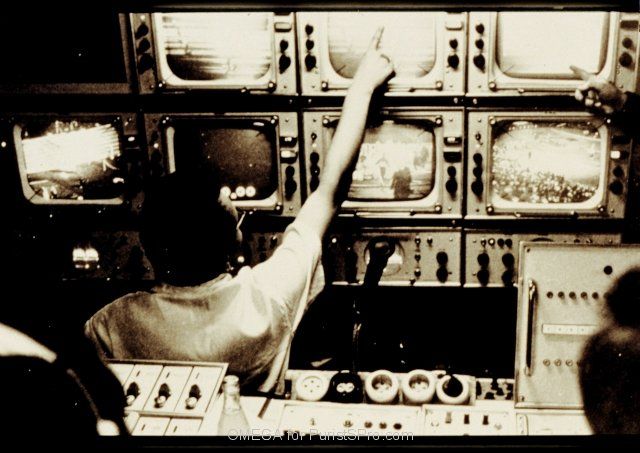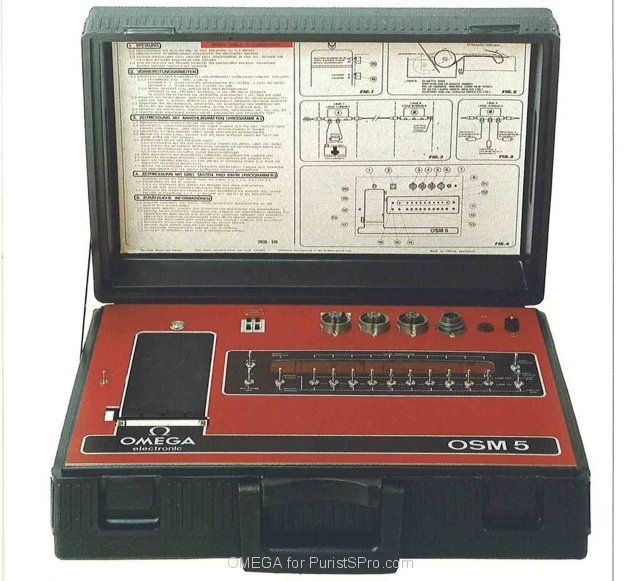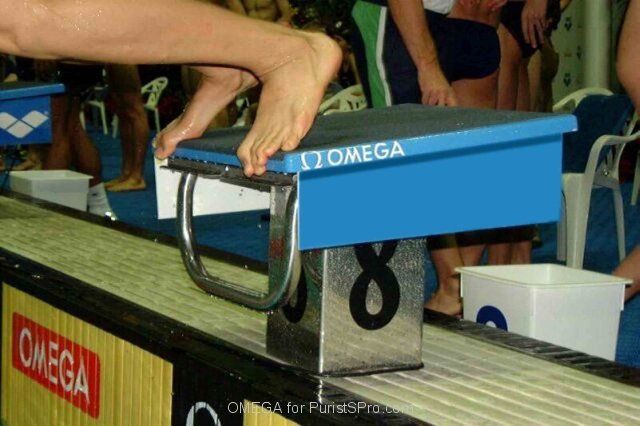
MTF
[PuristS]
13383

Omega Moments in Olympic Timekeeping
Omega Moments in Olympic Timekeeping (Source: Omega SA)
The Beijing 2008 Olympic Games open on 08/08/2008 and will mark the 23rd time that Omega has served as Official Timekeeper at the Olympic Games.

1898 – Omega made its first stopwatch.
1905 – Omega stopwatches were used to time 16 sporting competitions in Switzerland and abroad.
1909 – In its first appearance as official timekeeper of an international event Omega timed the Gordon Bennett balloon race in Zurich.
1916 – Omega made initial contact with the International Olympic Committee (IOC) on the occasion of competitions held in Lausanne to celebrate the IOC’s 25th anniversary.
1932 - For the first time in the history of the Olympic Movement the IOC assigned responsibility for official timekeeping at all events to a single company - Omega. Omega sent 30 Calibre 1130 stopwatches and one watchmaker to the Los Angeles 1932 Olympic Games. The stopwatches were used in all 14 sports on the programme. Olympic records were set in all of the athletics events and in 10 of the 11 swimming events. Altogether 17 world records were set, 14 in athletics and three in swimming.
The Omega stopwatches sent to Los Angeles enabled officials to time competitions, for the first time, to the nearest 1/10th of a second. An important innovative feature of the watches was the split-seconds function, which made it possible to record both the total elapsed time and intermediate (lap) times posted by each competitor.
1936 - Omega provided 27 stopwatches for use at the Garmisch-Partenkirchen 1936 Olympic Winter Games. The company also sent along a qualified watchmaker to ensure the watches ran perfectly. Later that year, Omega sent 185 stopwatches to Berlin for use at the Berlin 1936 Olympic Games and set up a workshop so that any necessary repairs could be carried out on-site.
1945 – Omega built an independent compact photoelectric cell for use at the start or end of races in various disciplines. An infrared beam is projected from a light on to a photoelectric cell facing it on the other side of the start or finish line. When the beam is cut by a passing competitor, the cell transmits an instantaneous electrical pulse to the timing device. Omega built a set (transmitter-receiver and reflector) that could be carried from one sporting event to another in a suitcase. Photocell units gradually replaced the use of the Muybridge string or finishing tape, the first modern timing trigger.

1948 – The Racend OMEGA Timer, the world’s first photo-finish camera, made its debut at the London 1948 Olympic Games. “The camera that films time” revolutionised sports timekeeping. A contemporary Omega account explained: “This new device replaces the limited sight capabilities of the naked eye with a highly sensitive photo cell, while human reflexes are replaced by a lightning-fast electrical current. The principle is based on the use of a beam of light which is projected across the finishing line and back again. As soon as a runner interrupts the beam by crossing it, the stopwatches are triggered. Since all the functions are electronic, the level of accuracy is such that times could be given to the nearest 1/1000th of a second. This surpasses by far all previous devices. Thanks to the photo cell, all the special equipment such as the finishing tape and hydropneumatic tube can be dispensed with.”

1952 – Omega introduced its battery-powered, quartz-driven OMEGA Time Recorder equipped with a high-speed printer able to print out times to the nearest 1/100th of a second, at the Helsinki 1952 Olympic Games. Although the IAAF approved the OMEGA Time Recorder, the official times continued to be measured by hand and recorded only to the nearest 1/10th of a second. That is why the times do not appear on the photo-finish documents which were published at the time – they had to be kept secret.

1952 – Omega was awarded the IOC Cross of Merit for outstanding service to the world of sport, for the unfailing reliability of Omega timekeeping and for its numerous innovations in this area.

1956 – Starting gates were used for the first time in Alpine skiing, at the Olympic Winter Games held in Cortina d’Ampezzo, Italy. The start time was automatically triggered by an acoustic and optical (red-orange-green) starting signal. Skiers were allowed to set off between 0.5sec before and one second after the acoustic signal.

1956 – Omega introduced the first semi-automatic timing device with a digital display, the Swim Eight-O-Matic, at the Melbourne 1956 Olympic Games. The automatic triggering of the start time meant that the swimmers “lost” around 0.2sec compared to the previous system, where all timekeeping was manual. Nevertheless, the first Olympic Games held in the southern hemisphere witnessed eight world records. Finishing times were still measured with handheld stopwatches by 24 timekeepers – three for each lane.
The Swim Eight-O-Matic was a small part of the 2,475 kg of timekeeping equipment that Omega packed into 42 boxes and shipped to Melbourne in time for the opening of the Olympic Games on 22 November.


1960 – The Rome Olympic Games saw the introduction by Omega of giant electronic scoreboards in the Palazzo and Palazzetto dello Sport venues. These were the forerunners of the giant video matrix scoreboards found in most modern sports stadiums around the world today.

1961 - OMEGA presented the Omegascope, a timekeeping device allowing the time of each competitor followed by a camera to be superimposed on the TV screen image.


1964 version of the OmegaScope
1966 – The International Amateur Athletic Federation (IAAF) recognized electronically recorded race times as official.
1967 – Omega touchpads were used for the first time at an international swimming competition, at the Pan-American Games in Winnipeg, Canada. The new system allowed the swimmers to stop their own times by touching the contact pads at the finish; these times were recognized as official.

1968 – For the first time touchpads were used in Olympic swimming competitions, at the Mexico City 1968 Olympic Games. A loudspeaker was placed behind each starting block to ensure that every swimmer heard the starter’s gun at the same time. The Swim-O-Matic, successor to the Swim Eight-O-Matic, was accurate to the nearest 1/1000th of a second, but despite electronic timekeeping athletics and swimming world records were still recorded to the nearest 1/10th of a second.

1968 – Omega sent 45 timekeepers and eight tonnes of timekeeping and measurement equipment to Mexico City. The Omega Photosprint, developed in 1963, was used in athletics to film all runners as they crossed the finish line. The camera was equipped with a tiny vertical opening and the film with a time strip. Time was thus linked with photography and modern sports timekeeping was born. The photo-finish camera filmed world records in 10 running events at the 2248m altitude Estadio Olimpico. Omega installed 52 scoreboards for the Games, including the world’s largest at the time which measured 30m x 8m.
1976 – At the Innsbruck Winter Olympic Games Omega timekeepers measured luge race times in thousandths of a second for the first time.
Omega sent 35 timekeepers and eight tonnes of equipment to the Summer Games in Montreal, including a huge OMEGA video matrix board which had debuted two years earlier at the Asian Games in Tehran. The board was used to display black and white video recordings, along with results from competitions in the Stade Olympique.
1979 – Omega introduced the first false-start detection system for athletics races
1980 – The Olympic Winter Games in Lake Placid saw the first use at an Olympic Games of the OMEGA Game-O-Matic in Alpine skiing. As soon as each skier crossed the finish line, it immediately calculated and displayed their current ranking.

1980 – Swim-O-Matic version introduced. As soon as each swimmer touched pads at the finish, it immediately calculated and displayed their current ranking.

1984 – At the Los Angeles Olympics pressure-sensitive false start detectors were used in both athletics and swimming, combined with loudspeakers for the starting signal behind each starting block to ensure that each athlete heard the start signal at the same time. In athletics, the device is based on the pressure in kilograms that runners exert against the starting block. The start is the only part of the race where timekeeping does not measure a geometric distance but rather a psychological one, as it were: reaction time. This is defined as the period of time between the moment an athlete hears the start signal and when he or she explodes off the starting blocks. The runner must not move until 0.1sec after the final start signal. The device reacts when the pressure of the foot reaches 27kg. Maximum pressure is achieved when the arms leave the ground.

Swiss Timekeeping Team 1988 Seoul Korea with 1992 Games Invitation on scoreboard
1988 – Omega sent 707 pieces of timekeeping equipment weighing some 51 tonnes to South Korea for the Seoul 1988 Olympic Games, including a 14m x 9m colour video matrix installed at the Olympic stadium.

1992 – The OMEGA Scan-O-Vision photo-finish system appears for the first time at the Albertville Winter Olympic Games. The new system digitally measures times to the nearest 1/1000th of a second. The Scan-O-Vision photographs time using a linear vertical recording technology.

1996 – Global Positioning Technology was used at the Atlanta Olympic Games to plot the position of the boats in the sailing regattas in Savannah. A total of 196 engineers and sports timekeeping technicians brought 100 tonnes of equipment from Switzerland, including the Omega Scan-O-Vision scanners which had been upgraded to operate in colour. Radar guns were used to measure acceleration of sprinters.
2000 – Omega introduced “live timing” on the Internet (www . omegatiming . com) for the 2000 European Swimming Championships. Race results were posted 15 seconds after the winner hit the touchpad, and a PDF printout was made available 55 seconds later. For legal reasons results from competitions at the Sydney 2000 Olympic Games could not be published until 30 minutes after the end of the event concerned.
2001 – On 21 January a long-term partnership agreement was signed under which the Official Timekeeper given responsibility not only for timekeeping and scoreboards but also for data processing and On Venue Results. In other words the official timekeeper was to be responsible for all information inside the stadiums, for TV captions and the transmission of results to the Commentator Information System (CIS).
2006 – At the Turin Winter Olympics for the first time Omega supplied all the scoreboards for the 14 competition venues – 100 scoreboards in all. Omega shipped 220 tonnes of equipment from Switzerland to Turin for the Games. During the 16 days of competition the Omega timekeeping team recorded 105,510 times 2,582 distances, 10,891 speeds and 72,122 scores. They had a job to do, in other words, every four seconds – and performed flawlessly.
For the first time at an Olympic Games speed skaters wore special transponders on their ankles. The chips are able to send and receive radio signals as the skater passes over a 3mm detection loop embedded in the ice. An exact time is taken as the skater passes over the loop. This method of timing is used for training purposes and is ideally suited and used for timing the Team Pursuits.
Omega also served as Official Timekeeper for the Torino Paralympic Games, which attracted a record number of media representatives and drew substantial audiences to the venues in Turin and to TV screens around the world.
2008 – In addition to serving as Official Timekeeper of the Beijing Olympic Games OMEGA is responsible for data handling services and for On Venue Results (OVR) at the 37 competition venues in Beijing and six co-host cities of Qingdao (Sailing), Hong Kong (Equestrian) and the four football cities of Shanghai, Tianjin, Shenyang and Qinhuangdao. Omega will deploy more than 330 professional timekeepers and data processing experts to provide the official results from nearly 400 events in 35 different sports.

Omega Moments in Olympic Timekeeping

'Olympics Great Moments in Time' Exhibition Singapore

thats a nice watch. i...

Thanx Graham, however...
1994 Olympic limited Edition watch information

can anyone clarify the 1994 Lillehammer issue?
1994 Omega "Lillehammer Olympics" production numbers

Very interesting post, MTF


